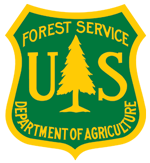-
 Climate change-associated tree mortality increases without decreasing water availability
Climate change-associated tree mortality increases without decreasing water availability
-
Here, we reveal temporally increasing tree mortality across all study species over the last three decades in the central boreal forests of Canada, where long-term water availability has increased without apparent climate change-associated drought. Our results suggest that the consequences of climate change on tree mortality are more profound than previously thought.
Located in
Resources
/
Climate Science Documents
-
 Climate Effects and Adaption in Forests
Climate Effects and Adaption in Forests
-
Dr. Christopher J. Fettig, Dr. Maria K. Janowiak, and Dr. Jessica E. Halofsky discuss how climate change driven increases in temperature and variation in precipitation are impacting U.S. forests and the wide range of ecosystem services they provide, sharing opportunities to proactively address risks to forests, and providing concrete examples of adaptation strategies and tactics that can be leveraged by the federal government and private landowners.
Located in
News and Webinars
/
Webinars
-
 Coastal habitats shield people and property from sea-level rise and storms
Coastal habitats shield people and property from sea-level rise and storms
-
Extreme weather, sea-level rise and degraded coastal ecosystems are placing people and property at greater risk of damage from coastal hazards 1–5. The likelihood and magnitude of losses may be reduced by intact reefs and coastal vegetation 1, especially when those habitats fringe vulnerable communities and infrastructure. Using five sea-level-rise scenarios, we calculate a hazard index for every 1 km2 of the United States coastline. We use this index to identify the most vulnerable people and property as indicated by being in the upper quartile of hazard for the nation’s coastline. The number of people, poor families, elderly and total value of residential property that are most exposed to hazards can be reduced by half if existing coastal habitats remain fully intact. Coastal habitats defend the greatest number of people and total property value in Florida, New York and California. Our analyses deliver the first national map of risk reduction owing to natural habitats and indicates where conservation and restoration of reefs and vegetation have the greatest potential to protect coastal communities.
Located in
Resources
/
Climate Science Documents
-
 Columbia Water Center White Paper America’s Water Risk: Water Stress and Climate Variability
Columbia Water Center White Paper America’s Water Risk: Water Stress and Climate Variability
-
The emerging awareness of the dependence of business on water has resulted in increasing awareness of the concept of “Water Risk” and the diverse ways in which water can pose threats to businesses in certain regions and sectors. Businesses seek to secure sustainable income. To do so, they need to maintain a
competitive advantage and brand differentiation. They need secure and stable supply chains. Their exposure risks related to increasing scarcity of water can come in a variety of forms at various points in the supply chain. Given increasing water scarcity and the associated deterioration of the quantity and quality of water sources in many parts of the world, many “tools” have been developed to map water scarcity riskor water risk. Typically, these tools are based on estimates of the average water supply and demand in each unit of analysis.Often, they are associated with river basins, while business is associated with cities or counties. They provide a useful first look at the potential imbalance of supply and demand to businesses.
Located in
Resources
/
Climate Science Documents
-
 Contrasting futures for ocean and society from different anthropogenic CO2 emissions scenarios
Contrasting futures for ocean and society from different anthropogenic CO2 emissions scenarios
-
The ocean moderates anthropogenic climate change at the cost of profound alterations of its physics, chemistry, ecology, and services. Here, we evaluate and compare the risks of impacts on marine and coastal ecosystems—and the goods and services they provide—for growing cumulative carbon emissions under two contrasting emissions scenarios. The current emissions trajectory would rapidly and significantly alter many ecosystems and the associated services on which humans heavily depend. A reduced emissions scenario — consistent with the Copenhagen Accord’s goal of a global temperature increase of less than 2°C — is much more favorable to the ocean but still substantially alters important marine ecosystems and associated goods and services. The management options to address ocean impacts narrow as the ocean warms and acidifies.
Located in
Resources
/
Climate Science Documents
-
 Declining annual streamflow distributions in the Pacific Northwest United States, 1948–2006
Declining annual streamflow distributions in the Pacific Northwest United States, 1948–2006
-
Much of the discussion on climate change and water in the western United States centers on decreased snowpack and earlier spring runoff. Although increasing variability in annual flows has been noted, the nature of those changes is largely unexplored. We tested for trends in the distribution of annual runoff using quantile regression at 43 gages in the Pacific Northwest. Seventy-two percent of the stations showed significant (a = 0.10) declines in the 25th percentile annual flow, with half of the stations exceeding a 29% decline and a maximum decline of 47% between 1948 and 2006. Fewer stations showed statistically significant declines in either median or mean annual flow, and only five had a significant change in the 75th percentile, demonstrating that increases in variance result primarily from a trend of increasing dryness in dry years. The asymmetric trends in streamflow distributions have implications for water management and ecology well beyond those of shifted timing alone, affect both rain and snow-dominated watersheds, and contribute to earlier timing trends in high- elevation watersheds.
Located in
Resources
/
Climate Science Documents
-
 Divergent phenological response to hydroclimate variability in forested mountain watersheds
Divergent phenological response to hydroclimate variability in forested mountain watersheds
-
Mountain watersheds are primary sources of freshwater, carbon sequestration, and other ecosystem services. There is significant interest in the effects of climate change and variability on these processes over short to long time scales. Much of the impact of hydroclimate variability in forest ecosystems is manifested in vegetation dynamics in space and time. In steep terrain, leaf phenology responds to topoclimate in complex ways, and can produce specific and measurable shifts in landscape forest patterns. The onset of spring is usually delayed at a specific rate with increasing elevation (often called Hopkins’ Law; Hopkins, 1918), reflecting the dominant controls of temperature on greenup timing. Contrary with greenup, leaf senescence shows inconsistent trends along elevation gradients. Here, we present mechanisms and an explanation for this variability and its significance for ecosystem patterns and services in response to climate. We use moderate-resolution imaging spectro-radiometer (MODIS) Normalized Difference Vegetation Index (NDVI) data to derive landscape-induced phenological patterns over topoclimate gradients in a humid temperate broadleaf forest in southern Appalachians. These phenological patterns are validated with different sets of field observations. Our data demonstrate that divergent behavior of leaf senescence with elevation is closely related to late growing season hydroclimate variability in temperature and water balance patterns. Specifically, a drier late growing season is associated with earlier leaf senescence at low elevation than at middle elevation. The effect of drought stress on vegetation senescence timing also leads to tighter coupling between growing season length and ecosystem water use estimated from observed precipitation and runoff generation. This study indicates increased late growing season drought may be leading to divergent ecosystem response between high and low elevation forests. Landscape-induced phenological patterns are easily observed over wide areas and may be used as a unique diagnos- tic for sources of ecosystem vulnerability and sensitivity to hydroclimate change.
Keywords: drought deciduousness, hydroclimate variability, landscape phenology, MODIS NDVI, topoclimate gradient
Located in
Resources
/
Climate Science Documents
-
 Diverse pollinator communities enhance plant reproductive success
Diverse pollinator communities enhance plant reproductive success
-
Understanding the functional consequences of biodiversity loss is a major goal of ecology. Animal-mediated pollination is an essential ecosystem function and service provided to mankind. However, little is known how pollinator diversity could affect pollination services. Using a substitutive design, we experimentally manipu- lated functional group (FG) and species richness of pollinator communities to investigate their consequences on the reproductive success of an obligate out-crossing model plant species, Raphanus sativus. Both fruit and seed set increased with pollinator FG richness. Furthermore, seed set increased with species richness in pol- linator communities composed of a single FG. However, in multiple-FG communities, highest species richness resulted in slightly reduced pollination services compared with intermediate species richness. Our analysis indicates that the presence of social bees, which showed roughly four times higher visitation rates than solitary bees or hoverflies, was an important factor contributing to the positive pollinator diversity–pollination service relationship, in particular, for fruit set. Visitation rate at different daytimes, and less so among flower heights, varied among social bees, solitary bees and hoverflies, indicating a niche complementarity among these pollinator groups. Our study demonstrates enhanced pollination services of diverse pollinator communities at the plant population level and suggests that both the niche complementarity and the presence of specific taxa in a pollinator community drive this positive relationship.
Located in
Resources
/
Climate Science Documents
-
 DOES WOOD SLOW DOWN “SLUDGE DRAGONS?” THE INTERACTION BETWEEN RIPARIAN ZONES AND DEBRIS FLOWS IN MOUNTAIN LANDSCAPES
DOES WOOD SLOW DOWN “SLUDGE DRAGONS?” THE INTERACTION BETWEEN RIPARIAN ZONES AND DEBRIS FLOWS IN MOUNTAIN LANDSCAPES
-
Conservation measures for aquatic species throughout the Pacific Northwest rely heavily on maintaining forested riparian zones. A key rationale for this strategy is that the presence of standing and downed trees next to streams will provide a continuous source of wood, which is an important structural component of aquatic habitat. Yet little is known about the interactions between wood and debris flows, which are an important way that wood enters streams.Researchers from the PNW Research Station and Oregon State University created a physics-based simulation of debris flow dynamics in a headwater basin within the Oregon Coast Range. They found that the presence of wood funda- mentally changes the behavior of debris flows by reducing the momentum and distance that they travel. Because debris flow deposits are primary storage sites for sediment within headwater catchments, a shift toward shorter flows means that more sediment is stored higher up in watersheds. In addition, they found that zones with high densities of wood and sediment are relatively fixed in space and do not migrate downstream. This suggests that management strategies could specifically target achieving habitat objectives within these high accumulation zones, and there may be multiple management pathways for achieving these objectives.
Located in
Resources
/
Climate Science Documents
-
 Domesticated Nature: Shaping Landscapes and Ecosystems for Human Welfare
Domesticated Nature: Shaping Landscapes and Ecosystems for Human Welfare
-
Like all species, humans have exercised their impulse to perpetuate and propagate themselves. In doing so, we have domesticated landscapes and ecosystems in ways that enhance our food supplies, reduce exposure to predators and natural dangers, and promote commerce. On average, the net benefits to humankind of domesticated nature have been positive. We have, of course, made mistakes, causing unforeseen changes in ecosystem attributes, while leaving few, if any, truly wild places on Earth. Going into the future, scientists can help humanity to domesticate nature more wisely by quantifying the tradeoffs among ecosystem services, such as how increasing the provision of one service may decrease ecosystem resilience and the provision of other services.
Located in
Resources
/
Climate Science Documents























